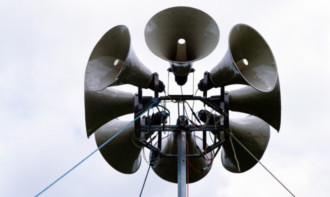
Whether it’s neighbours arguing, car alarms going off or the roar of traffic, unwanted noise is the bane of modern life.
So what is noise, why does it annoy us so much and should we be doing more to tackle it?
David Hendy author of Noise: A Human History and presenter of a Radio 4 series of the same name told Gavin Sherriff The Honest Truth about how noise affected the appearance of Scotland’s capital city and why a world without it might be just as irritating.
What is noise?
Noise is something that someone, somewhere, doesn’t want to hear. It’s about control if you can switch a sound on and off, you don’t think of it as noise. When you have no control over a sound, you tend to think of it as louder. The stereo booming out from a nearby car might be annoying you, but the person inside the car is enjoying the music.
Why does noise interest you?
I’m interested in how passionate people get about something we tend to think of as being “on in the background”. That got me thinking about listening. All the talk about this being a visual age didn’t make sense to me we’re very much in an aural age.
Is the world getting noisier?
It’s hard to argue that it isn’t getting noisier, but during the 20th century some places became quieter. When the car arrived at the beginning of the century it was regarded as an improvement because it had rubber wheels that went on tarmac, and that was quieter than iron-rimmed wheels pulled by horses. However, traffic increased and engines became bigger and louder.
Later in the century people came up with better technology for soundproofing buildings and there were things like legislation to stop night-time deliveries.
What sort of problems can noise cause?
Lack of sleep caused by noise is a serious health problem, but it’s been around for a long time.
In ancient Rome, deliveries were made at night through narrow streets so people were losing a lot of sleep.
In the Lower East Side of New York in the 19th century, there were 300,000 people living in one square mile. Many of them were working from home, using noisy sewing machines that were going round the clock. People committed suicide because of lack of sleep.
That doesn’t happen in New York any more, but the problem has shifted to other parts of the world so there will be sweatshops in parts of Asia now where people aren’t getting enough sleep.
Why aren’t people in noisy cities bothered by the racket?
You can go to a bustling market in Istanbul or Accra and it can be incredibly loud, but nobody worries because they feel as if the noise belongs to everyone. Can noise be more than just an irritation?
There are plenty of examples of it being used as a weapon of war. From the Greeks, Romans and the Mughal Indians there are lots of descriptions of battles in which fierce cries and clashes of armour were used to intimidate an enemy. Confederate troops in the American Civil War had their famous “Rebel Yell”, which was a shrieking sound designed to terrify the enemy.
Any surprising examples of irritating noises?
There have been disputes where sound has been an irritation in situations you might not expect. In 19th-Century France, people fought over church bells. It was particularly city dwellers who’d moved to the countryside and objected to the sound. People think the countryside is quiet and the cities are noisy. However, the sound of cockerels crowing or church bells ringing which might be regarded as idyllic and pastoral by some people can be very irritating.
Have some noises been a problem for a long time?
Pub chucking out time can be a problem today, but even back in the 16th Century there were complaints about rowdy people leaving bars. Legislation was passed saying people had to be quiet as they left. Laws also forbade blacksmiths to ply their trade late at night.
Another law passed in London in 1595 said “no man should cause any outcry by beating his wife or servant after nine in the evening”. But apparently it was fine to beat them before nine!
Is it true Edinburgh’s New Town was built because of noise?
Edinburgh’s old town was incredibly overcrowded and in the 18th Century the idea developed that it was more refined to be quiet. As the noise levels became unacceptable, the idea of the New Town caught on people could have their own front door without communal space.
Would the world be better if it was quieter?
Technology is helpful in making the world quieter, but there are limits and we wouldn’t want to live in a silent world. For example, there’s been research that shows people are more creative in a bustling cafe than a silent library.
It’s partly because it means we’re not distracted by sudden noises but also because we need other people around. Those living alone can also be reassured by the sound of neighbours going about their lives. That’s why many of us like having the radio on.
What noises bother you?
Something I can’t switch off, like someone else’s car alarm. I’m fairly tolerant, but my teenage son reckons I play my music too loudly!

Enjoy the convenience of having The Sunday Post delivered as a digital ePaper straight to your smartphone, tablet or computer.
Subscribe for only £5.49 a month and enjoy all the benefits of the printed paper as a digital replica.
Subscribe